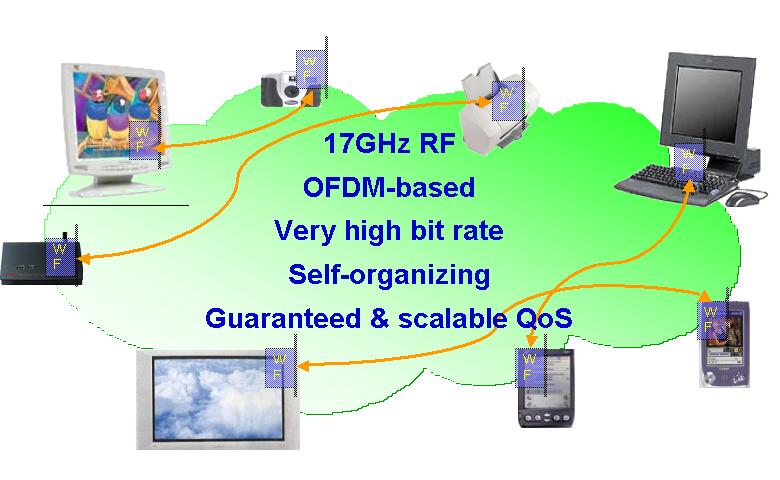
 |
Wireless CommunicationChapter: Network Concepts and Standards
|

All recent wireless technology developments, although pulled by different market requirements and applications (e.g., WLANs for portable connectivity in office IT enterprises, WPANs for cable replacement and personal sphere interconnectivity, etc.), have been characterized by a common quest for higher capacity density and link speed, on the one hand, as well as greater reliability and scalability in the presence of varying channel conditions and/or traffic loading and QoS system requirements, on the other. Guided by strong evidence on these common persistent trends, the WIND-FLEX European-wide consortium was launched in 2000, aiming at fulfilling the above requirements.
Due to the combined adoption of a high frequency (17GHz) for the radio carrier, of flexible radio interface schemes, plus maximization of modem functions/controls allocation in the digital domain, the specified WIND-FLEX radio interface provides dynamically adaptive reliable and efficient communications at a very high link speed, namely, up to 4 bundle-able channels, each one providing a maximum speed of 215Mbit/s gross data rate in the air, which translates to slightly more than 100Mbit/s payload at IP layer, thus representing a very attractive and innovative solution for next-generation wireless LAN/PAN developments.
The WIND-FLEX technology, thanks to the 17GHz frequency carrier choice which allows channels with wider bandwidth, smaller coverage ranges and good propagation characteristics, definitely outperforms both current state-of-the-art WPAN and WLAN technologies working in the 2.4 GHz (i.e., Bluetooth and 802.11b) and the 5 GHz range (i.e.802.11a), in terms of maximum bit rate (e.g., 802.11a can achieve in its higher profile a maximum air interface bit rate of 72 Mbit/s), in terms of capacity offering due to the easier channel reuse and the smaller cell sizes, plus in terms of spectral efficiency (about 20% better than 802.11a at PHY layer).
Moreover, the proposed solution allows for joint and dynamic optimization of its RF, baseband and MAC/DLC parameters according to time-varying channel conditions, traffic loading and QoS requirements, in order to guarantee required performances at minimum power consumption, while also remaining backward compatible with other OFDM-based technologies (i.e. 802.11a), thus leveraging the huge OFDM know-how developed during last years in the whole wireless industry.